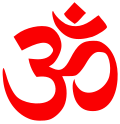| Part of a series on |
| Hindu scriptures and texts |
|---|
 |
| Related Hindu texts |
| Author | Krishnananda Agambagish Editor: Rasik Mohon Chattapadhhayay |
|---|---|
| Translator | Sri Chandra Kumar Tarkalankara |
| Language | Bengali |
| Subject | Bengali Shaktism, Kali puja |
| Genre | Tantra |
| Publisher | Nababharat Publishers |
Publication date | Falgun, 1285 Bangabda |
| Publication place | India |
| Media type | Printed texts |
| Pages | 771 |
Brihat Tantrasara or Tantrasara is a famous work on the social worship system of the various goddesses of the Dasamahavidya mentioned in various texts of Tantra Sadhana. Krishnananda Agambagish, a well-versed Tantric devotee of Tantra, wrote the famous book Brihat Tantrasara based on 170 Tantra Sadhana texts. [1] This famous work of him is appreciated all over the country. [2] Krishnananda was liberal, he had no bigotry about religion. Therefore, Tantrasara texts have been inserted by taking the essence of Tantra texts of Shaiva, Ganapathi, Shakta, Vaishnavism and Solar community. [3]